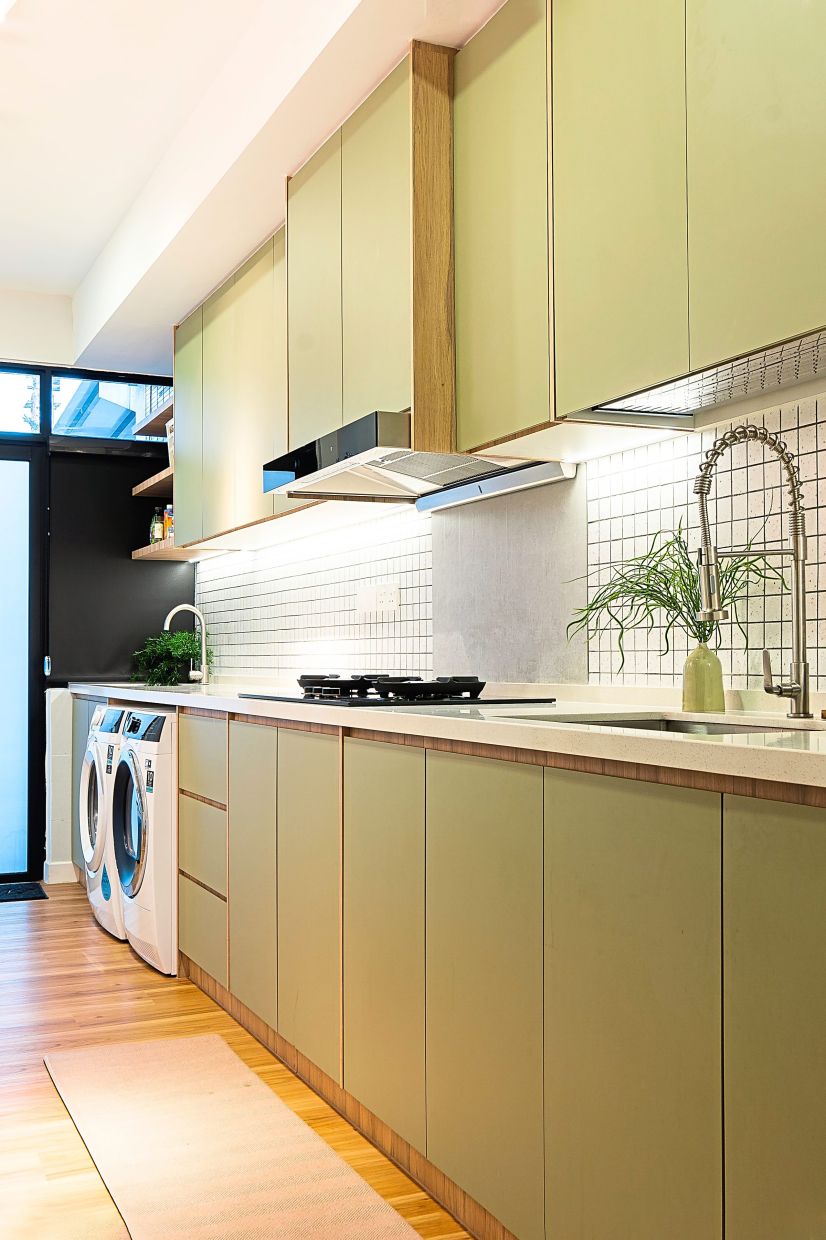Designing the home was a collaborative effort between the homeowner and designers, from deciding on the concept to selecting the furniture. Photos: Danial Baharum/FRAL Design Studio
With a focus on simplicity, natural elements and comfort, this new double-storey terrace home in Shah Alam, Selangor has been transformed into a welcoming abode, thanks to a clever design aesthetic by interior design company, FRAL Design Studio.
The company is more well known for their commercial and retail works featuring truth-to-materials concepts such as exposed concrete, raw materials and natural grain work (think Gasket Alley in Petaling Jaya). According to the co-founders of FRAL Design Studio, Ayu Lamien and Faiz Rosli, this home is a polished version of their style.
“Both homeowners are from the retail industry and they wanted things that are refined. During the lockdown, I found myself refining this industrial concept into something more elegant,” says Ayu.
Know what you want
Homeowner Zamzuri, his wife, Mazura and their family had lived in a different part of Shah Alam for 16 years before deciding to move to their new house. However, the search for the right interior designers took a while, before Zamzuri found Ayu and Faiz.
“It was important for me to have good communication with the ID team that we would work with. Based on previous exper-iences, sometimes it can be hard to work together when there isn’t any communication.
“They (FRAL) came highly recommended and what appealed to me at the beginning when looking at their profile was that there wasn’t an over exaggeration of their works! “My brief to them was simple – we wanted a home that wasn’t showy and something out of the ordinary.
“I knew that I wanted a home with a Japanese Scandinavian (Japandi) look and to be as natural as can be,” shares Zamzuri. “I’m so happy with the outcome.”
One example of the strong communication that they had was when halfway through the renovation, a cosy area to store Zamzuri’s vast collection of classic and limited-edition vinyls had to be scrapped due to budget issues.
However, Ayu and Faiz were able to convince Zamzuri that the corner was needed to complete the overall look and feel of the living area. So now Zamzuri has his very own man cave to enjoy music!
Function follows form
In a Japandi-style home, every piece has a function or, in many cases, multiple functions. At the start of the project, a mobile island was requested for the dining area.
Ayu designed it in such a way that the island remained versatile and functional enough even as a permanent fixture.
“Though it’s not a portable island, the way it’s placed and designed provides space for a coffee station or it can be turned into a buffet area when the family has guests over,” shares Ayu. “It can even be an additional seating area.”
Zamzuri attests that this arrangement works.
“We had almost 20 people recently and there was space for everyone!”
To provide more storage for the family, Ayu added wall coverings to the sides of the staircase.
“With most terrace houses, storage is often a challenge. So we wanted to ensure that the family had ample storage and is able to keep things concealed and neat.”
Textures for warmth and cosiness
Sourcing for furniture was also a collaborative effort.
“We often let homeowners be part of the process and choose their own design items. I had advised them not to buy any sofas until I gave them the final design layout. The sofa and the dining table were crucial pieces to the overall layout and I wanted to let them experience that.
“They would share some pictures of items with us, and we would advise them. That cross-checking with us really helped. For example, the dining table and dining chairs were purchased at different stores. My simple advice to them was to ensure that the legs of the chairs matched the table’s,” says Ayu.
The family has been really happy, and both their children do not want to leave the house anymore, Zamzuri jokingly says.
Ayu explains, “With this home, it was a relaxed project and it makes me feel happy to see it completed. There isn’t anything that I would do differently.”
Zamzuri says it’s important for first-time homeowners renovating their homes to know what they want.
“Have your references ready so you can share them with your designer. For me it’s a plus point if your designer also has similar interests with you so they will be able to understand what you’re trying to achieve. Next is having a two-way communication. This is important since what we want as a homeowner may not be practical in reality.”











